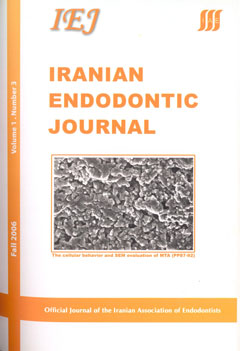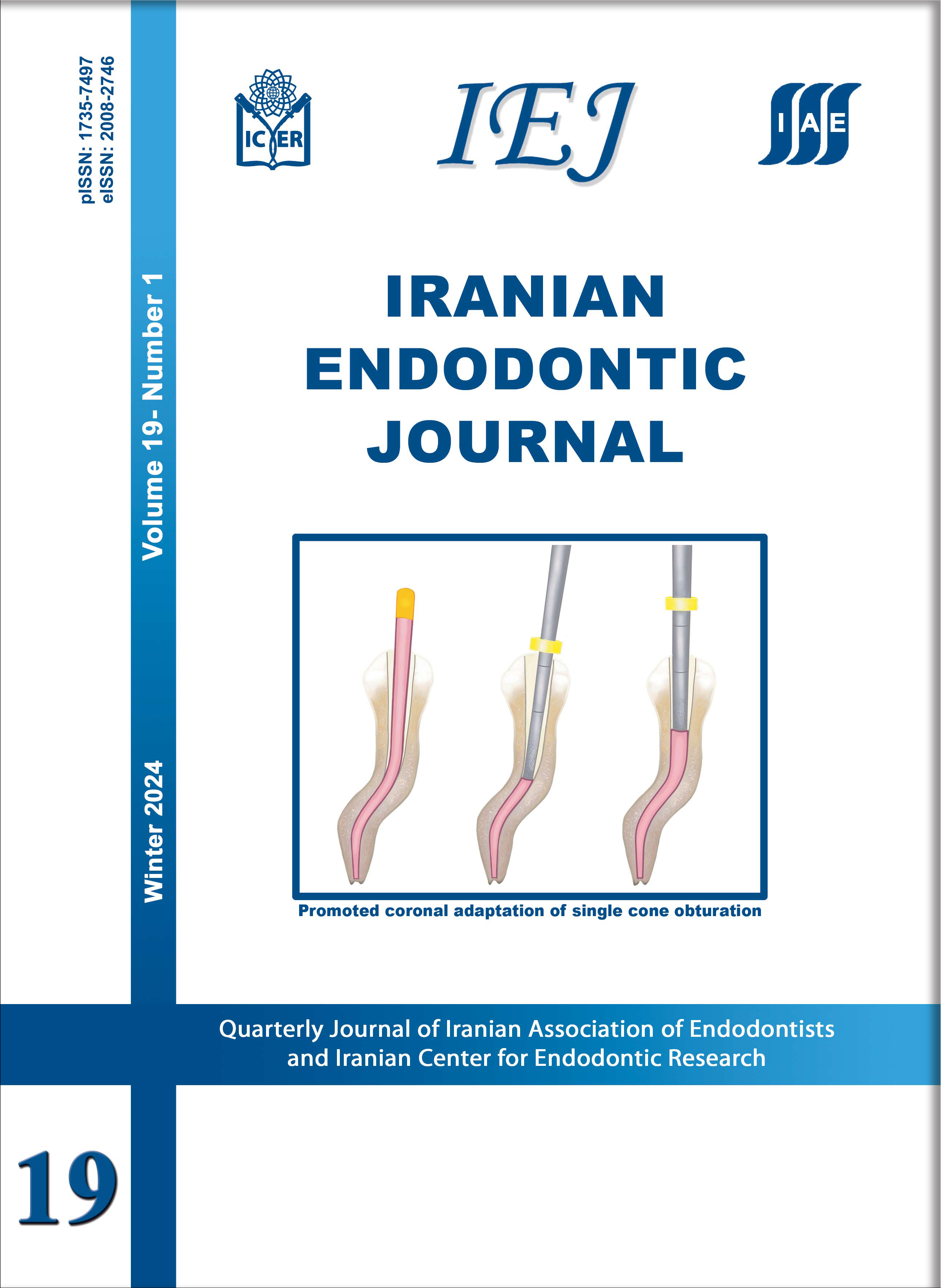An Evaluation of MTA Cements as Coronal Barrier
Iranian Endodontic Journal,
Vol. 1 No. 3 (2006),
1 Mehr 2006
,
Page 106-108
https://doi.org/10.22037/iej.v1i3.449
Abstract
INTRODUCTION: Coronal leakage seems to play an important role in the failure of endodontic treatment. A double seal over root canal filling has been suggested as a means of improving the coronal seal. Several restorative materials have been used in an attempt to produce a coronal barrier. The purpose of this study was to assess gray-coloured mineral trioxide aggregate (GMTA), white-coloured mineral trioxide aggregate MTA (WMTA), and Principle (a resin-modified glass ionomer) as coronal barriers to bacterial leakage. MATERIALS AND METHODS: Fifty-one human anterior teeth were cleaned and obturated with gutta-percha and sealer. In group 1, teeth received a 3 mm barrier of GMTA. In groups 2 and 3, samples received WMTA and Principle, respectively. Obturated teeth without barrier were used as positive control and obturated teeth covered with epoxy resin were used as negative control. A leakage model utilizing Enterococcus faecalis used for the evaluation. Leakage was recorded when turbidity was observed. RESULTS: All controls behaved as expected. Three samples in group 1, three samples in group 2, and four samples leaked in group 3. There was no statistically significant difference in leakage between GMTA and WMTA or between GMTA and Principle. CONCLUSION: It seems that GMTA, WMTA and Principle can be recommended as a coronal barrier for up to 90 days.
- Bacterial Leakage
- Coronal Barrier
- MTA
- Resin Modified Glass Ionomer
How to Cite
- Abstract Viewed: 211 times
- PDF Downloaded: 176 times




